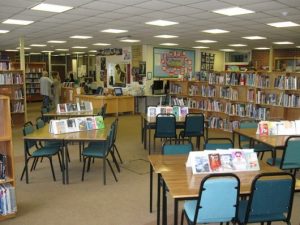My data sets for this project relate to my current home area of Max Meadows, Virginia with the zipcode being 24360. Due to my interest in potentially working in this area after graduation, I thought it would be interesting to examine both educational attainment as well as occupations of the town’s population. The area is pretty small in population compared to where I used to live, so I was curious to see what information I’d come across.
My first two charts examine the educational attainment of two separate age groups. The first bar graph is of the age group 18- 24 and is separated into several sections. It shows how many people have not graduated high school, those who have, whether or not they have some college or an Associate’s degree, and finally those who have a Bachelor’s degree or higher. The second bar graph is of the age group 25 and older and is separated into several slightly different sections. It shows how many people have less than a 9th grade education, those who didn’t finish high school completely, those who did finish high school, those who have some college or no degree, those who have an Associate’s degree, a Bachelor’s degree, and finally those who have a Graduate or Professional degree. All of the information gathered for these bar graphs came from the 2017 American Community Survey conducted specifically for Educational Attainment. The reason why I chose the bar format for both of these graphs is because it was easier to interpret the information as opposed to a pie chart. For the two different groups, one overall pie chart would have made it more confusing. Bar graphs are better for comparisons amongst different categories and shows the trends between the two groups better.
My third chart examines the occupations of those in the town who are 16 and older. With this employed population being 2,871, I was interested to see what the categories were divided up into. For this chart, I specifically chose a pie chart because I wanted to see how the overall employed population was divided up into each of the different employment categories. These categories included Management, Business, Science, and Arts occupations; Computer, Engineering, and Science occupations; Education, Legal, Community Service, Arts, and Media Occupations; Healthcare Practitioner and Technical occupations; Service occupations; Protective Service occupations; Sales and Office occupations; Natural Resources, Construction, and Maintenance occupations; and finally Production, Transportation, and Material Moving occupations. These categories are much more difficult to put into a bar or line graph as it isn’t really comparative- it’s more of an overall picture and aren’t really specifically relating to each other the way the educational attainment bar graphs do. As such, I put them into percentages as opposed to direct numbers. All of the information gathered for this pie graph came from the 2017 American Community Survey for the civilian employed population 16 years and over.
Data Charts:
http://blogs.longwood.edu/phillipsle/files/2018/12/Educational-Attainment.xlsx
http://blogs.longwood.edu/phillipsle/files/2018/12/Occupations.xlsx
Resources:
https://factfinder.census.gov/faces/tableservices/jsf/pages/productview.xhtml?src=CF
https://factfinder.census.gov/faces/tableservices/jsf/pages/productview.xhtml?src=CF

Recent Comments